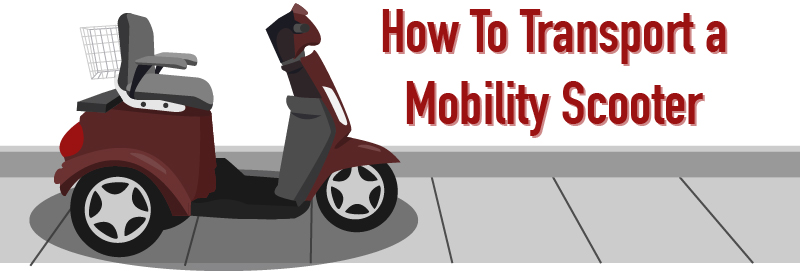People count on mobility scooters every day to help them shop, run errands, and just have a little fun. One of the easiest ways to transport a mobility scooter is with a hitch mounted scooter carrier. These carriers come in many shapes and sizes to fit the needs of anyone looking to transport their scooter.
What type of hitch do you need?
The first step in scooter transportation is to have a trailer hitch installed on your vehicle. You can easily schedule a hitch installation, and for just about $30 more U-Haul will also install the electrical connection at the bumper to operate the lift.
The hitch tongue weight capacity, which you can find on the link above and on the hitch itself, must be enough to support the combined weight of both the mobility scooter and the scooter carrier.
Next, you’ll need to make sure the hitch receiver size that your lift requires is available for your vehicle. The majority of scooter lifts require a 2” square receiver and in most cases, only one receiver size will be available per vehicle. Hitch receivers with a 1 ¼” opening don’t have the tongue weight capacity to support a scooter & lift combination. If there isn’t a 2” receiver available for your vehicle a receiver adapter is not recommended to accommodate your new scooter carrier
- A trailer hitch with a 2” opening has a tongue weight capacity between 300 and 1,000 pounds.
Already have a hitch installed?
You may have a hitch on your vehicle already; if so confirm that the tongue weight rating is greater than the combined weight of the carrier and scooter. A U-Haul Hitch-Pro can assist you with the electrical connection at the bumper to operate the lift.
Types of Scooter Carriers
There are two types of scooter carries: manual and electric. Manual scooter carriers require you to load the scooter onto a platform using the ramp. Manual carriers typically weigh less than electric carriers and are less expensive. These might work better for smaller vehicles and 1-1/4” receiver hitches.

Electric scooter carriers are great if you need a little more assistance getting their scooter onto a carrier. These come flush with the ground to allow for an easy load, but require a wire from the battery to operate the electric lift.

If the scooter carrier is too high, or low on your vehicle, the lift can usually be adjusted to maintain the proper height. Your lift instructions or the carrier manufacturer will have the information you need for this adjustment.
Most car companies offer a rebate program to help cover up to $1,000 towards the cost of a scooter carrier. Wheelchaircarrier.com is a great resource to guide you to the correct rebate program for your vehicle.
Do you have experience with a scooter carrier? Comment below to help others get on the road today!




